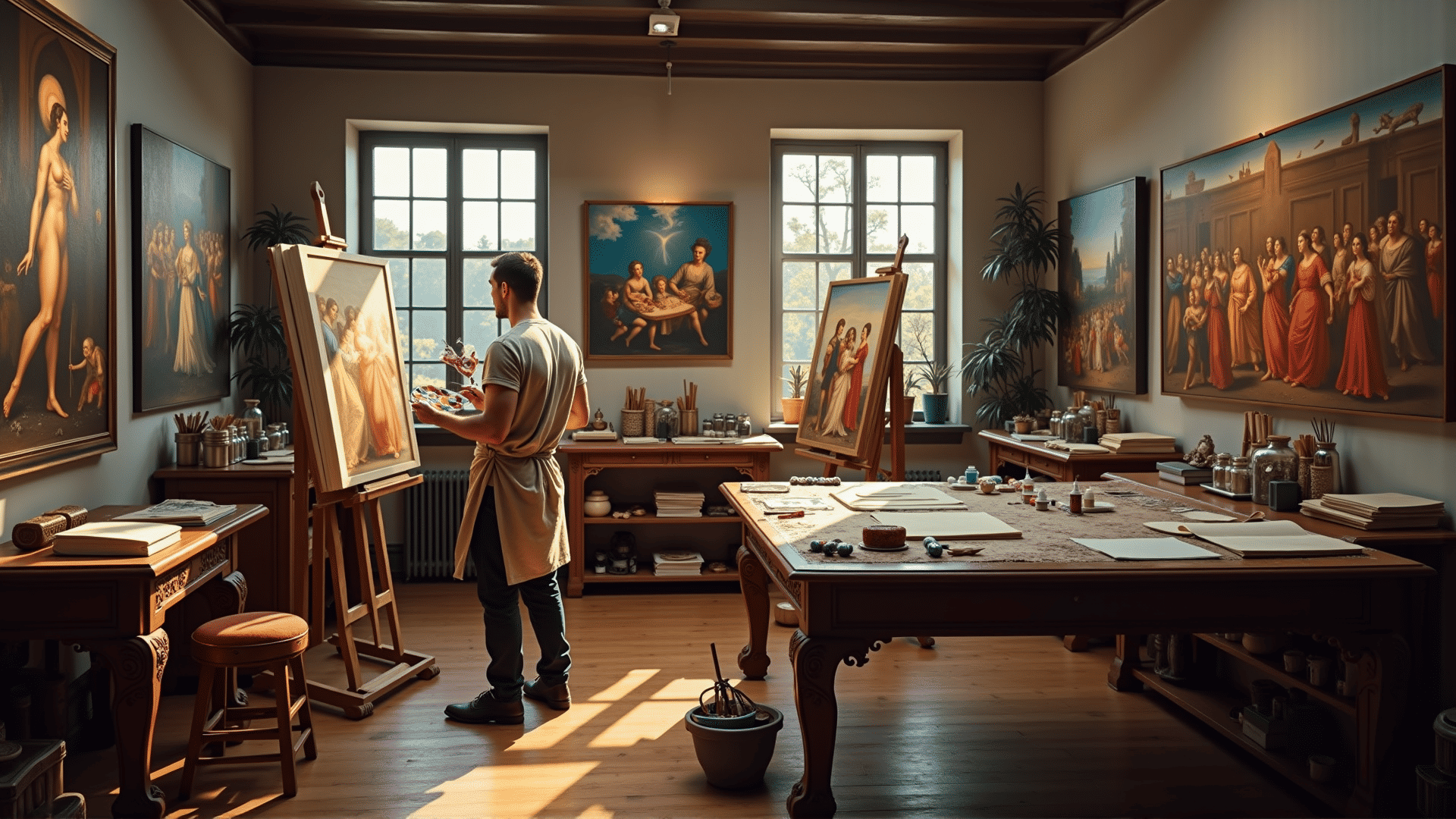The Renaissance era, an extraordinary explosion of art, culture, and intellectual endeavor, continues to captivate the imagination of artists and audiences alike. Emerging in 14th-century Italy and flourishing through the 17th century, the Renaissance heralded a return to classical antiquity’s ideals, breathing life into art forms, scientific inquiry, and a human-centered worldview. Today, centuries later, the echoes of the Renaissance are being heard louder than ever as contemporary artists draw inspiration from this rich period, reviving ancient techniques and infusing them into modern expressions.
Contemporary art has always been a dialogue between past and present, and the Renaissance provides a particularly fertile ground for such an exchange. Artists today are rediscovering and reinventing Renaissance methodologies, fueled by a longing for authenticity and mastery that characterized the old masters. This revival of ancient techniques is most evident in the realm of painting, where the likes of oil glazing, chiaroscuro, and fresco work have made a striking comeback.
Oil glazing, a hallmark of Renaissance painting, involves the application of thin, transparent layers of oil paint over a dried opaque layer. This technique imbues paintings with a depth and luminosity that is difficult to achieve with modern mediums alone. Today's artists are revisiting these time-intensive methods to create works that possess a depth of emotion and texture reminiscent of Da Vinci and Titian, bringing a tangible sense of history to their work while maintaining contemporary relevance.
Similarly, the technique of chiaroscuro, with its dramatic interplay of light and shadow, is witnessing a resurgence. This method, perfected by masters like Caravaggio, is being employed by modern artists to create dynamic compositions and emphasized emotions, reflective of both classic storytelling and modern narratives. The controlled use of light and shadow allows contemporary practitioners to explore themes of duality, conflict, and revelation, anchoring their modern storytelling in a technique that transcends time.
The fresco, another grand relic from the Renaissance, is being rediscovered in innovative ways. The arduous process of painting onto freshly laid wet plaster has found a modern twist, with artists adapting the method to work on different mediums and scales. This blending of traditional craftsmanship with contemporary materials and themes results in artworks that are distinctly modern yet deeply rooted in the principles of Renaissance artistry.
Beyond specific techniques, the core principles of the Renaissance—humanism, proportion, and perspective—continue to influence contemporary practices in profound ways. The human-centered approach that defined the Renaissance is mirrored today in the resurgence of figurative art and the exploration of the human condition. Artists are investigating psychological and existential narratives through the lens of modern experience, anchoring these explorations within a framework once established by pioneers like Michelangelo and Raphael.
Furthermore, the mathematical precision and study of anatomy that became synonymous with the era are being incorporated into contemporary visual storytelling and digital art forms. This blend of science and art, hallmarks of the Renaissance spirit, can be seen in the emerging field of bio-art, where art meets biology to explore the boundaries of life and the human experience.
In essence, the revival of Renaissance art in contemporary practice is not merely a nostalgic retreat into the past but a dynamic interplay of old and new, offering innovative possibilities for artistic expression. By embracing the techniques and philosophical underpinnings of the Renaissance, modern artists are crafting spaces where history and modernity coalesce, creating works that are historically informed yet bold and distinctly relevant. This Renaissance revival is a testament to the timeless nature of artistic inquiry and the enduring capacity of art to reinvent the present through the lens of the past.
